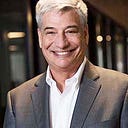The history of Silicon Valley.
In five minutes.
Last week a young engineer in my office said he had no idea how Silicon Valley got its name. Seriously?
OK, listen-up, young pups, while the old dog gives you five minutes of schooling.
See the gizmo in the photo? That’s a transistor. In 1956 William Shockley and his peeps were awarded the Nobel Prize for inventing it. It changed everything, and it especially changed Santa Clara Valley, where I grew up spending the lazy summers of my childhood chasing lizards through apricot orchards.
A transistor is made using semiconductor material, and does a very simple thing: a voltage applied to one terminal changes the current flowing through the other two. As a teenager I spent a lot of time soldering transistors together to make amplifiers to annoy my parents. And the semiconductor material used in transistors is — wait for it — silicon.
After winning the Nobel Prize, Shockley left his job at Bell Labs in New Jersey and moved to Mountain View, California, where he founded Shockley Semiconductor and became a professor at Stanford University. Eventually eight of his employees (later dubbed “the traitorous eight”) quit to found Fairchild Semiconductor in Palo Alto. They switched over to using silicon (instead of germanium) for making transistors because silicon is so cheap and abundant.
It turns out that one of the things transistors are really good at is acting as logic gates. If a voltage is present at one terminal then current flows through the other two terminals and the logic gate is “on”. If voltage isn’t present, then the logic gate is “off”. Everything inside a computer is binary: 1's or 0's. On or off. Boolean algebra. This is important — are you paying attention?
But to build a computer you need a bunch of logic gates, so Robert Noyce at Fairchild had the idea of using silicon wafers to create multiple transistors on a single integrated circuit chip.
Noyce quit Fairchild, co-founded Intel, and they eventually built Intel into a billion-dollar company focused on making integrated circuits with thousands of transistors on each, using silicon wafers.
Meanwhile, in Palo Alto, two guys named Bill Hewlett and David Packard had started an electronic instrument company (their first customer was Walt Disney, who bought HP oscilloscopes for refining his audio tracks). By the 1960's Bill and Dave realized these newfangled silicon chips being made in Santa Clara Valley could be useful in designing smaller, faster computers. In 1966 HP entered the computer market with the HP 2100-series — a new category called “minicomputers” because they were only the size of large refrigerator.
One day in the early 1970's a high school kid named Steve Jobs called up Bill Hewlett and asked him for a summer job soldering silicon transistors together to make circuit boards. Steve met another guy named Steve and they spent evenings in their parents’ garage in Cupertino, soldering MOS 6502 chips together. Soon they managed to create an computer even smaller than minicomputers, so they called it a “microcomputer”. The first Apple computer launched the summer I graduated from high school. I saved all my money and bought an Apple II a year later, in the summer of 1977. It was the coolest thing I had ever owned.
By 1978, the Santa Clara Valley I had grown up in was changing pretty rapidly. The beautiful apricot orchards were being plowed under to make room for all the fast-growing companies using silicon to manufacture semiconductors. In fact, so much silicon was being consumed in Santa Clara Valley that people started calling it “Silicon Valley”.
Today, very little semiconductor manufacturing remains in the Valley — it’s mostly all moved offshore now. The apricot orchards are also gone, and I suppose the lizards are probably mostly gone. I have no idea where my original Apple II is.
A new generation of tech companies now fills the Valley, this time largely making software. But silicon transistors are still at the heart of practically every device we use, from laptops to iPhones, from Google searches to Tesla cars.
And that, young pups, is how Silicon Valley got its name. You’re welcome.
